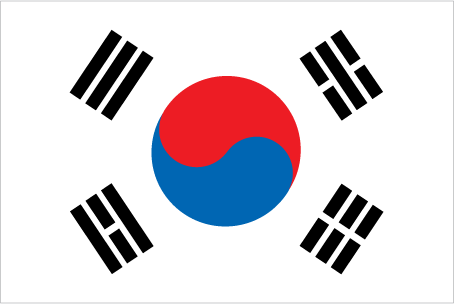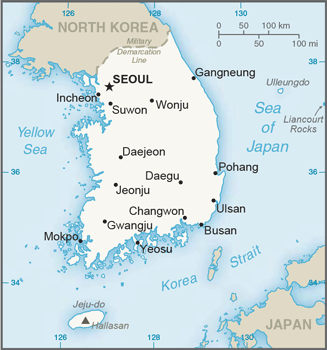Exporting to South Korea


South Korea Country Profile
Official Name (Local Language) Taehan-min’guk
Capital Seoul
Population 50,924,172
Currency South Korean Won
GDP $1,411 billion
Languages Korean
Phone Dial In 82
South Korea Imports Profile
Imports ($m USD) 478,469
Number of Import Products 4,487
Number of Import Partners 226

South Korea Economic Statistics
Government Website | https://korea.assembly.go.kr/ |
| Sovereign Ratings | https://countryeconomy.com/ratings/south-korea |
| Central Bank | Bank of Korea |
| Currency USD Exchange Rate | 1.167 |
| Unemployment Rate | 3.7% |
| Population below poverty line | 12.5% |
| Inflation Rate | 1% |
| Prime Lending Rate | 1.25% |
| GDP | $1,411 billion |
| GDP Pro Capita (PPP) | $37,900 |
| Currency Name | South Korean Won |
| Currency Code | KRW |
| World Bank Classification | High Income |
| Competitive Industrial Performance | 26/138 |
| Corruption Perceptions Index | 51/180 |
| Ease of Doing Business | 5/190 |
| Enabling Trade Index | 27/136 |
Access trade, receivables and supply chain finance
We assist companies to access trade and receivables finance through our relationships with 270+ banks, funds and alternative finance houses.
Get StartedExporting to South Korea
With imports of around $540 billion annually South Korea ranks at number 9 on the list of importing economies. The country has been characterised by rapid economic growth in recent decades, with GDP per capita rising from $2,300 in 1980 to $30,000 in 2010.
The major imports of South Korea are machinery, electronics, electronic equipment, steel, oil, optical instruments, plastics, organic chemicals and transport equipment. Major import partners are China, Japan, the United States, Saudi Arabia, Qatar and Australia.
Exporting to South Korea: What is trade finance?
Trade finance is a revolving facility which alternative financiers offer – it enables SMEs to purchase stock supplies and can help reduce the pressure from cashflow issues.
Often, a trade finance bank will fund all of the cost of the products, including charges (e.g. VAT charges).
Trade finance offers added advantages over more traditional bank finance such as invoice finance or business loans. Trade finance provides up front funding without affecting existing bank relationships.
How does it work?
If you’re a company importing or exporting goods outside of your own country, then a trade finance facility would assist your company to fund this through offering a letter of credit (LC) or some form of cash advance.
I’m looking to export to South Korea, how can Trade Finance Global help, and how does it work?
If you are looking to export products to other markets, you may need finance for exporting, which is an agreement between you (the exporter), and the foreign importer. A alternative financier will advance you the cost of producing the goods that you are exporting (as a debt product), either once you have sent the goods, or before you have produced them. Once your foreign importer has received the products and pays you for the import, you will repay the advance from the export bank over an agreed period.
Chart Showing GDP Growth Compared to rest of world
GDP Composition for South Korea
Agriculture
2.2%
Rice, root crops, barley, vegetables, fruit, cattle, pigs, chickens, milk, eggs, fish
Industry
38.6%
Electronics, telecommunications, automobile production, chemicals, shipbuilding, steel
Services
59.2%
Map
Top 5 Exports Partners
| Country | Trade | % Partner Share |
| China | 97,859 | 20.45 |
| Japan | 55,124 | 11.52 |
| United States | 50,908 | 10.64 |
| Germany | 19,748 | 4.13 |
Top 5 Exports Products
| Export Product | Number |
| Petroleum oils and oils obtained from bituminou | 12.5% |
| Monolithic integrated circuits, digital | 7.0% |
| Natural gas, liquefied | 3.9% |
| Petroleum oils, etc, (excl. crude); preparation | 3.1% |
| Apparatus and equipment for photographic (incl | 3.1% |
Local Partners
- All Topics
- South Korea Trade Resources
- Export Finance and ECA Topics
- Local Conferences



















